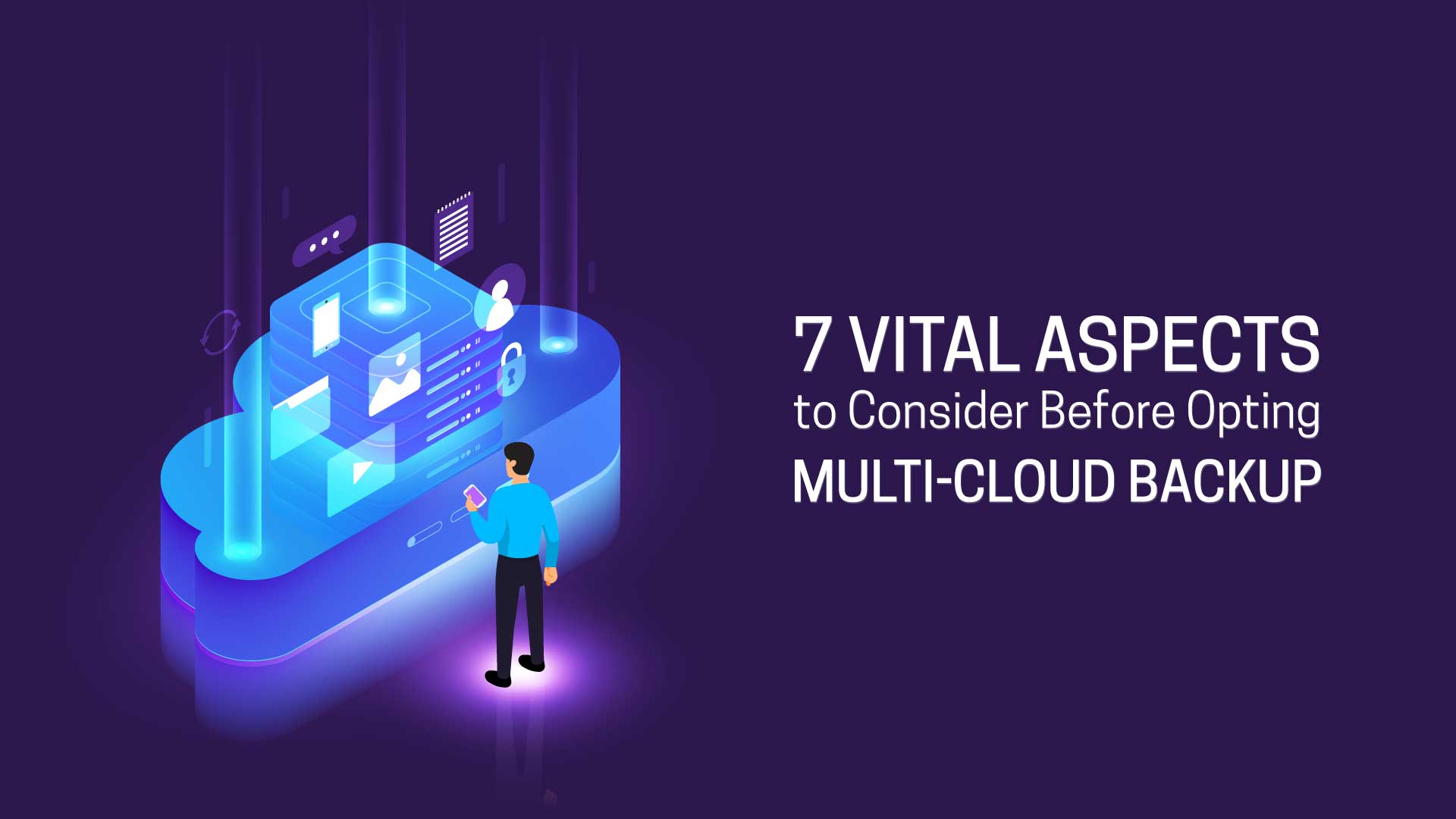In our previous blog, End Ransomware Threats with a Good Backup Strategy, we have established how vital it is for organizations to make proper backups of their data. Let us now understand what is probably one of the most popular ways of backing up data in recent times – multi-cloud backup.
Multi-cloud backup, also known as Polynimbus Cloud backup is a cloud computing-storage strategy that involves multiple cloud vendors in a single heterogeneous architecture.
It is prudent to employ more than one cloud service provider to be safe.
We recommend that you follow the “3-2-1 Backup rule” explained in our previous blog so that you do not end working with a single vendor.
Please read Multi-cloud strategy for Effective Data Recovery to gain an insight into the added benefits of practicing polynimbus cloud strategy.
While the industry keeps discussing whether the multi-cloud strategy will be the future of backup or is it being hyped for no good reason, one should understand all other dimensions of the multi-cloud backup strategy.
Resiliency
Any cloud vendor can offer both locally and globally available resiliency. However, they are designed to function only during data-center level disaster recovery events and not customer-level disaster recovery events such as application failure, corrupted disks, or accidental deletion of data.
As is often said, disaster recovery is not backup. Therefore, it is best not to leave the backup to chance with any cloud vendor.
Service-Level Agreement (SLA)
All cloud vendors do not have equal or uniform SLAs. It can be a complex task to manage multiple vendors SLA’s if multiple cloud vendors are engaged.
Adaptability
The multi-cloud backup strategy will work out for your business only if, the potential cloud vendor you choose integrates with both your current and your future cloud vendors.
Compliance
Compliance should be one of the main criteria for the selection of a vendor and not the cost.
Also, the IT teams have an additional responsibility of ensuring that they are backing up all the data on their respective clouds while maintaining compliance with various regulatory standards of each cloud vendor.
Data Transfer
Care should be taken during the evaluation phase to ensure that moving data between the clouds will not be a challenge. Ensure that the cloud vendor provides a cross-migration tool.
Centralization
The most crucial need for an effective multi-cloud backup strategy apart from a central location is a well-operated centralized process by which the data is backed up and organized.
Administering this process requires in-depth knowledge and experience of how each cloud service functions and how data is configured within the environment.
Multi-cloud Vendor Selection
Currently, with numerous cloud vendors, we are spoilt for choice. Selection of the right cloud products and services can be tricky. The more complex the environment, the more challenging the job becomes, and users may suffer from the paradox of choice.
Opting for polynimbus cloud strategy for backup is a decision based, more on your business than a technological one. Using a multi-cloud data backup strategy may prove to be suitable for your data protection, as long as it is ideal for your business first.



No comments yet.
Leave a Comment
Let us know your thoughts on this !